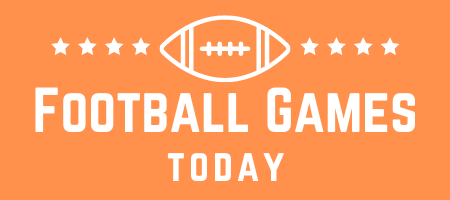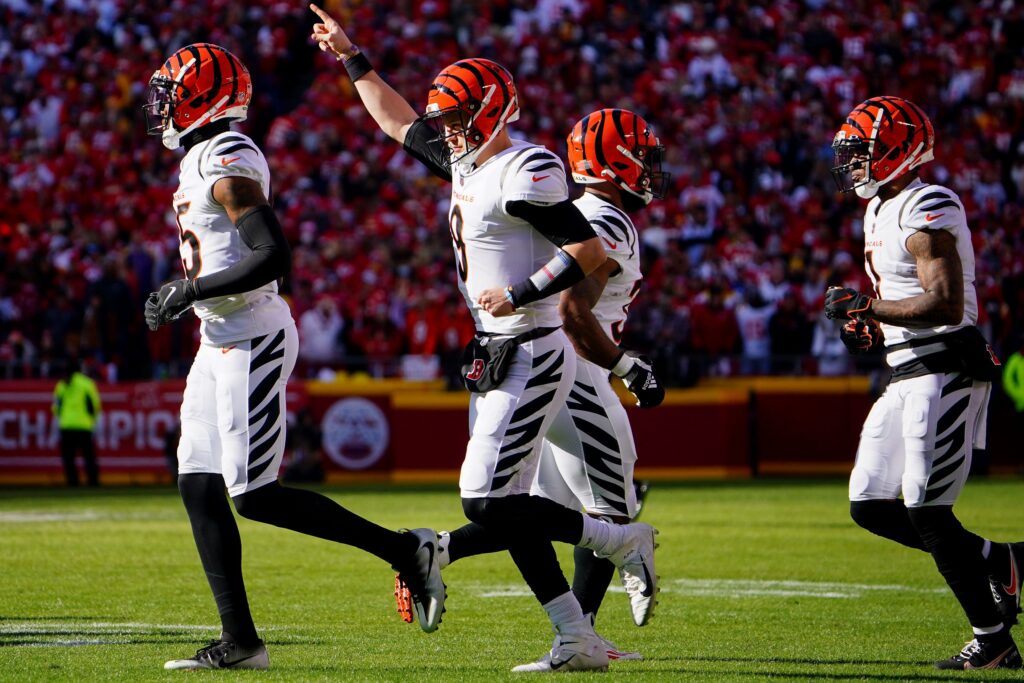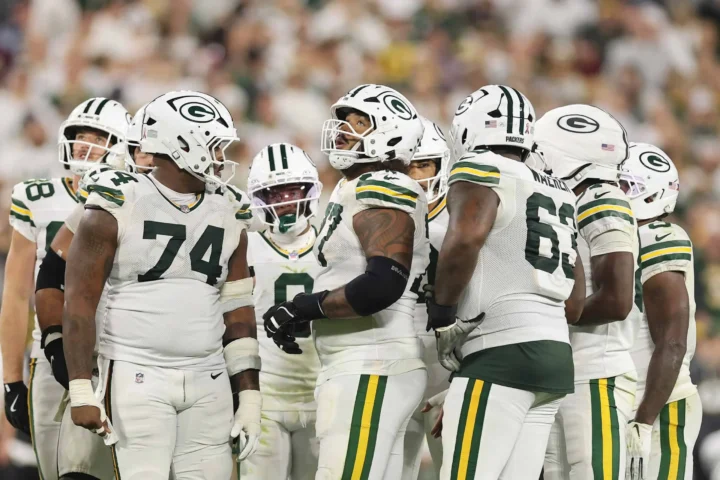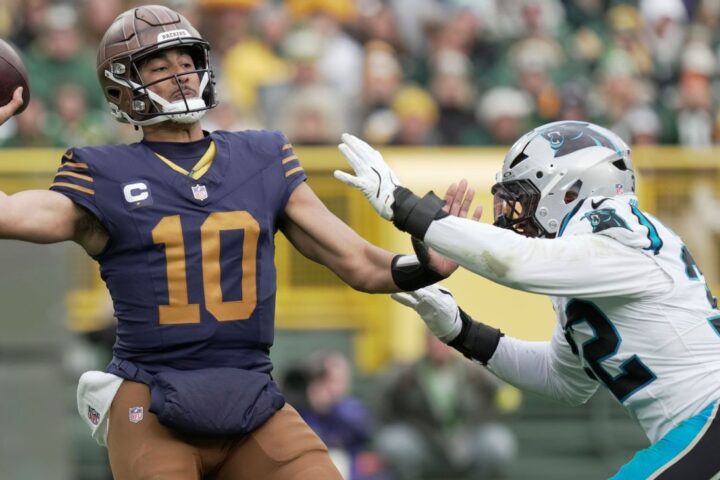It’s fair to say no fantasy football format has risen in popularity more in recent years than Best Ball. Providing fantasy managers with a quick and simple way to draft a team, Best Ball is a great way to satiate that desire to draft while not overwhelming yourself with lineups to manage.
Drafting a Best Ball roster isn’t as simple as just taking the best players. You need to maximize weekly upside. One of the best ways to do that is by stacking. What is the strategy of stacking, and why should you prioritize doing it in fantasy football Best Ball drafts?
What Is a Stacking Strategy in Best Ball?
If you’re reading an article on stacking, you probably have some idea of what it is. But we cater to fantasy gamers of all skills and experiences. So, what is stacking?
The concept of stacking is quite simple — you draft at least one pass catcher on the same NFL team as your quarterback. It could be as basic as drafting a quarterback and just one of his wide receivers. Or you could draft a quarterback, two of his wide receivers, and his tight end.
In Best Ball fantasy football drafts, you’re drafting two or three quarterbacks every time. Ideally, you would pair each one of them with at least one wide receiver or tight end.
Should You Stack in Best Ball?
In its simplest form, fantasy football is a game about predicting the future. When we draft players, we are predicting that those players will perform well. When we make pickups, we are predicting that the player we’re adding will be better than the player we’re dropping.
When we make trades, we are predicting that the players we receive will be better than the players we give up. When we set our lineups, we are predicting that the players in our lineups will score more fantasy points than the players we leave out of our lineups.
MORE: FREE Mock Draft Simulator With Trades
In any scenario where the outcome is uncertain, the goal is to swing the odds as heavily in your favor as possible. That’s where stacking comes in.
Every season, the best players can mostly be found on the best offenses. There will always be good players on bad offenses as well, but this is a game of probabilities. What is most likely to happen? As a result, we want as many good players on good teams as we can get.
Whether you are playing fantasy football for the first time or in your 30th season, you are going to be wrong. A lot. If you get 55-60% of your takes correct, that’s an excellent rate. As always, the goal is to be right more than we are wrong.
Stacking Increases Our Odds of Being Right
Even when you draft players on presumptively bad teams, you are still hoping his offense turns out to be better than expected. Good offenses score more points, which increases the chances for your players on that team to score points. When an offense has a good week, odds are your player helped contribute. Stacking decreases the number of predictions you need to get correct.
For example, say you draft the quarterback and two wide receivers from one team. Whenever that quarterback has a big game, chances are at least one — if not both — of your wide receivers will as well. If that quarterback throws three touchdowns, you may end up having four or five of them on your team.
Touchdowns are everything in fantasy football. If you draft a wide receiver who scores 10 times, and you also have his quarterback, that means your team will get credit for two touchdowns each of those 10 times.
The more teams you draft players from, the more things you need to get right. If you have a quarterback on one team, a wide receiver on another team, and a second wide receiver on a third team, those are three different things you need to get correct. By stacking in your Best Ball drafts, if you get one thing correct — that team has a good offense — you’ve increased your odds of getting multiple players correct.
Stacking Maximizes Weekly Upside
In addition to limiting what we need to get correct, stacking raises our team’s weekly ceiling. This goes for both Best Ball and seasonal fantasy football formats.
If your entire roster consists of players from different NFL teams, you need all of those teams to score points, and for those points to benefit your players. Additionally, spreading yourself thin like that increases the chances of your players’ offenses performing well helping your competitors.
If none of your pass catchers are paired with your quarterback, every time one of them catches a touchdown, a team other than yours is benefiting. When you have the pass catchers stacked with your quarterback, you get all the points. Every time your QB throws a touchdown to your wide receiver or tight end, you gain on every other team in your league.
MORE: Which Rookies Could You Draft for Best Ball in 2023?
In Best Ball leagues, there are no head-to-head matches. Your goal is to score the most points over the course of the 17-week season. If you have two sets of QB-WR-WR/TE stacks, for example, there will be, in theory, numerous instances over the course of the season where you’re doubling up on production.
Now, to be fair, I’ve focused exclusively on the benefits here. Of course, there are risks. If you stack players and their offense flops on any given week, that’s two or three players disappointing.
With that said, the beauty of Best Ball is the automatic optimal lineups. When your stacks disappoint, odds are there is someone else on your roster stepping up. Overall down weeks are inevitable, but the nature of Best Ball helps mitigate the damage. If you get it right, the spike weeks will help more than the down weeks will hurt.
When your stacks have bad games, you will still have plenty of other players that can enter your lineup and mitigate the damage. If your quarterback only throws one touchdown in a given week, odds are the pass catchers you stacked with him didn’t do so well either. That’s OK (as long as it doesn’t happen too often). Your non-stacked players can pick up the slack.
Should You Handcuff in Best Ball?
In fantasy football drafts, you should always draft handcuffs … just not your own. When you handcuff your own running backs, you are capping your own team’s upside.
With two backs on the same team, it’s going to be difficult for both to provide fantasy value any given week. You also hamstring your seasonal upside because you can’t get both players correct. For your handcuff to have value, the starter would have to either get hurt or play poorly. Well, if that happens, you just lost your starting running back. Even if the handcuff can produce at the exact same level as the starter, that’s still dedicating two roster spots to one position.
There’s also the added issue of true handcuffs becoming fewer and fewer in the modern NFL. With so many teams using multiple running backs, the No. 2 in a backfield is less a handcuff and more a guy with standalone value that will increase if the starter goes down.
In Best Ball, it’s even more problematic because you can’t make any moves during the season. Seasonal fantasy football leagues (for the most part) involve trying to win one matchup against one opponent each week. In Best Ball, you’re trying to beat 11 other managers over the course of an entire season. Playing it safe is a great way to come in fourth. You don’t get paid to come in fourth.
For the handcuffs that do exist, instead of drafting them for your own running backs, draft the high-upside handcuffs for other managers’ running backs. That way, if they lose their starting RB, you gain an asset without it coming at the expense of one of your own.
Go Into a Best Ball Fantasy Football Draft and Give the Stacking Strategy a Shot!
Now that you understand the benefits of stacking, if you’ve never tried it before, give it a whirl. My favorite Best Ball platform is Underdog because of its incredible UI and the speed at which you can find and complete a draft. Just be careful not to overdo it.
Your goal in every fantasy football Best Ball draft should be to have at least one stack. With that said, you are still at the mercy of a draft room. Stacking is beneficial, but don’t pass on superior players just to force a stack onto your roster.
MORE: 2023 Player Dynasty Profiles
What makes Best Ball so appealing, especially in the Summer months, is you can draft as many teams as you want, whenever you want, and once the draft is over, you don’t have to do a thing all season.
There will be Best Ball drafts where you just aren’t able to stack at all. At the same time, there will be other Best Ball drafts where you get every stack you want. The more drafts you do, the better you will get at figuring out how to maneuver through a draft room to optimize your roster.
Ultimately, Best Ball is a numbers game. Some of your teams will be terrible. It’s going to happen. But if you do enough drafts and implement strategies like stacking, hopefully, the majority of them turn out the way you want, and at the end of the season, you’ve cashed more than you haven’t.




